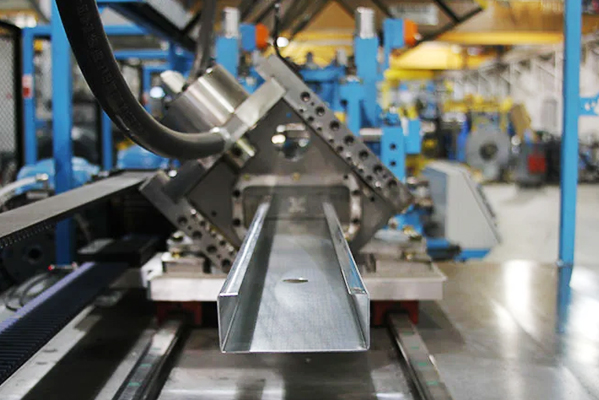Navigation Menu
Contact Us
- Email:
- info@wxavatar.com
- Address:
- Yurong Village, Yuqi Street, Huishan District, Wuxi, China.
Release Date:Apr 17, 2025 Visit:1 Source:Roll Forming Machine Factory
Steel rolling mills are industrial facilities that process raw steel into various shapes and forms by passing it through a series of rollers. This mechanical process reduces thickness, improves material properties, and produces steel products with precise dimensions. Rolling mills are essential in metalworking, supplying materials for construction, automotive, manufacturing, and other industries.

Types of Steel Rolling Mills
Rolling mills can be classified based on their function, product output, and operational design. The main types include:
1. Hot Rolling Mills
Hot rolling mills process steel at high temperatures (above recrystallization levels, typically over 1,000°C). This method is used to produce:
Structural beams (I-beams, H-beams)
Rail tracks
Plates and sheets for shipbuilding and heavy machinery
Rebar and wire rods for construction
Hot rolling improves ductility and allows for large deformations, making it suitable for bulk steel production.
2. Cold Rolling Mills
Cold rolling occurs at or near room temperature, producing smoother and more precise steel products with tighter tolerances. Common outputs include:
Thin steel sheets for automotive panels and appliances
Coiled strips for precision manufacturing
Galvanized and coated steel for corrosion resistance
Cold rolling enhances strength and surface finish but requires more power than hot rolling.
3. Continuous vs. Reversing Mills
Continuous mills pass steel through multiple rollers in one direction, enabling high-speed production of long strips or bars.
Reversing mills move steel back and forth between rollers for controlled thickness reduction, often used for specialized or heavy plates.
4. Specialized Rolling Mills
Shape rolling mills produce custom profiles like angles, channels, and T-bars.
Ring rolling mills create seamless rings for bearings, turbines, and aerospace components.
Tube and pipe mills form hollow sections for plumbing, oil & gas, and structural applications.
Key Components of a Rolling Mill
A typical rolling mill consists of:
Rollers (Work Rolls & Backup Rolls): Apply pressure to shape the steel.
Roll stands: House the rollers and adjust spacing for thickness control.
Heating furnaces (for hot rolling): Maintain steel at optimal temperatures.
Cooling systems: Stabilize the steel’s microstructure post-rolling.
Coiling and cutting equipment: Package finished products into coils, sheets, or bars.
Applications of Rolled Steel Products
Rolled steel is used in nearly every major industry, including:
Construction: Beams, columns, rebar, and roofing sheets.
Automotive: Body panels, chassis components, and engine parts.
Manufacturing: Machinery frames, tools, and industrial equipment.
Infrastructure: Bridges, pipelines, and railway tracks.
Consumer Goods: Appliances, furniture, and storage systems.

Conclusion
Steel rolling mills play a crucial role in transforming raw steel into usable forms for industrial and commercial applications. Whether through hot rolling for structural strength or cold rolling for precision finishes, these mills enable efficient, large-scale production of high-quality steel products. As manufacturing demands grow, advancements in rolling technology continue to enhance efficiency, precision, and material performance.